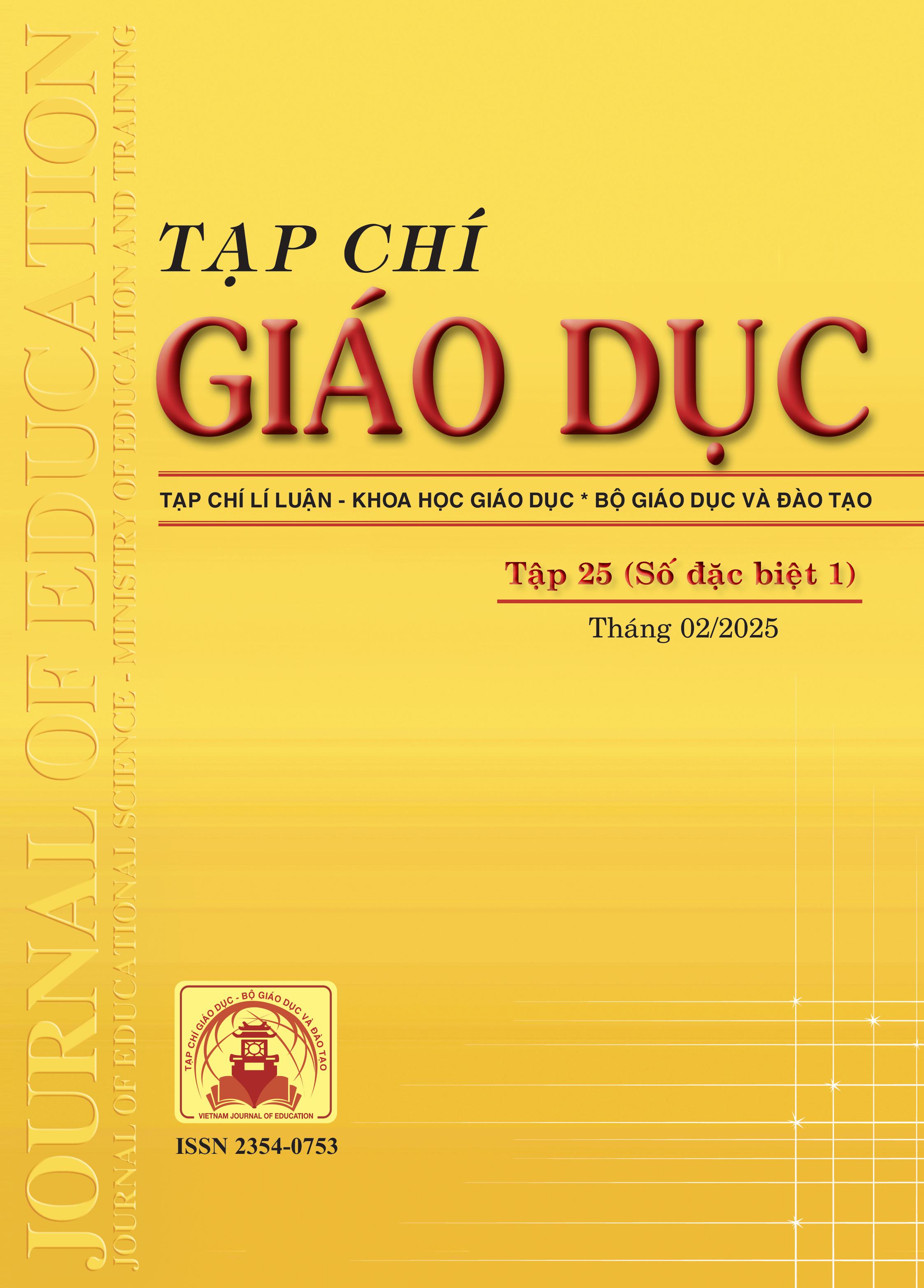Thực trạng dạy học môn Tự nhiên và xã hội lớp 3 theo định hướng giáo dục STEAM tại một số trường tiểu học trên địa bàn Thành phố Hồ Chí Minh
Tóm tắt
STEAM education plays an important role in the context of educational innovation in Vietnam today. With the goal of helping students develop the competencies and qualities mentioned in the 2018 General Education Program, STEAM education has been integrated into primary school subjects in general and Natural and Social Sciences in particular. To study the teaching of Natural and Social Sciences in grade 3 according to the STEAM education orientation at some primary schools in Ho Chi Minh City, this study conducted an online survey and in-depth interviews with 151 primary school teachers in 17 primary schools in Ho Chi Minh City. The survey results are the basis for us to propose measures to support primary school teachers in organizing the teaching of Natural and Social Sciences in grade 3 according to the STEAM education orientation effectively and can also be a useful reference source for educational managers in implementing STEAM education in primary schools.
Tài liệu tham khảo
Bahrum, S., Wahid, N., & Ibrahim, N. (2017). Integration of STEM education in Malaysia and why to STEAM. International Journal of Academic Research in Business and Social Sciences, 7(6), 645-654. https://doi.org/ 10.6007/IJARBSS/v7-i6/3027
Bequette, J. W., & Bequette, M. B. (2012). A place for art and design education in the STEM conversation. Art Education, 65(2), 40-47. https://doi.org/10.1080/00043125.2012.11519167
Bộ GD-ĐT (2020). Thông tư số 27/2020/TT-BGDĐT ngày 04/9/2020 ban hành quy định đánh giá học sinh tiểu học.
Bộ GD-ĐT (2023). Công văn số 909/BGDĐT-GDTH ngày 08/3/2023 về việc hướng dẫn tổ chức hoạt động giáo dục STEM trong giáo dục tiểu học.
Chien, Y.-H., & Chu, P.-Y. (2018). The different learning outcomes of high school and college students on a 3D-printing STEAM engineering design curriculum. International Journal of Science and Mathematics Education, 16, 1047-1064. https://doi.org/10.1007/s10763-017-9832-4
Ge, X., Ifenthaler, D., & Spector, J. M. (2015). Moving forward with STEAM education research. Emerging technologies for STEAM education, 383-395.
Henriksen, D., Mehta, R., & Mehta, S. (2019). Design thinking gives STEAM to teaching: A framework that breaks disciplinary boundaries. In S. A. Myint Swe Khine (Ed.), STEAM education: Theory and practice (pp. 57-78). Springer International Publishing. https://doi.org/10.1007/978-3-030-04003-1_4
Liao, C. (2016). From Interdisciplinary to Transdisciplinary: An Arts-Integrated Approach to STEAM Education. Art Education, 69, 44-49. https://doi.org/10.1080/00043125.2016.1224873
Lou, S., Tsai, H., & Tseng, K. (2011). STEM Online Project Based Collaborative Learning for Female High School Students. Kaoshiung Normal University Journal, 30.
Maeda, J. (2013). STEM + Art = STEAM. The STEAM Journal, 01(1), 34. https://doi.org/10.5642/steam.201301.34
Öztürk, B., & Seçken, N. (2017). Preparing an instructional design based on science, technology, engineering and mathematics (STEM) approach on the topic of “Chemistry everywhere” for 10th grade students. Turk, Online J. Educ. Technol, 603-613.
Quigley, C. F., & Herro, D. (2016). “Finding the joy in the unknown”: Implementation of STEAM teaching practices in middle school science and math classrooms. Journal of Science Education and Technology, 25, 410-426. https://doi.org/10.1007/s10956-016-9602-z
Sousa, D. A., & Pilecki, T. (2018). From STEM to STEAM brain-compatible strategies and lessons that integrate the arts (2nd ed.). SAGE Publications.
Voicu, C. D., Ampartzaki, M., Dogan, Z. Y., & Kalogiannakis, M. (2022). STEAM Implementation in Preschool and Primary School Education: Experiences from Six Countries. IntechOpen. https://doi.org/10.5772/ intechopen.107886
Đã Xuất bản
Cách trích dẫn
Số
Chuyên mục
Giấy phép

Tác phẩm này được cấp phép theo Ghi nhận tác giả của Creative Commons Giấy phép quốc tế 4.0 .












